As predicted, I was on the first ferry to Sidney Island on Saturday morning, chasing a Great Egret discovered by Daniel Donnecke on Thursday. He and his son Leo paddled out again on Friday night and confirmed that the bird was still in the harbour just before sunset, but with campers on the island and the ferry running for the weekend, no one knew how long that would last.
I was able to spot the American White Pelicans at the far end of the bay before we even got off the ferry, and decided to scope the shore before heading out along the footpath. Boom! There it was. Right in the open on the shoreline, bird number 218, Great Egret.
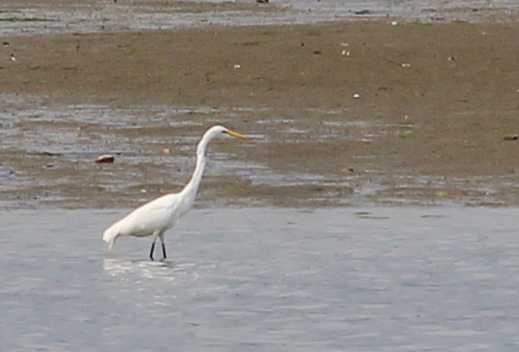 If I’d been just a little quicker, I could have hopped right back on the ferry, but I now had two and a half hours to spend on the island. I walked down to the dock near the campground to get a better look at both the egret and the pelicans.
If I’d been just a little quicker, I could have hopped right back on the ferry, but I now had two and a half hours to spend on the island. I walked down to the dock near the campground to get a better look at both the egret and the pelicans.
The Purple Martin colony at both docks were very busy. When you see a dozen or more of these birds at one place, it’s hard to believe that there were fewer than that in the whole province thirty years ago.
The nest box program initiated by folks like Darren Copley, Tom Gillespie and Cam Finlay brought these birds back from the brink of extirpation to a healthy population of more than 1000 pairs now. The Purple Martin program is managed now by Bruce Cousens and Charlene Lee of the Georgia Basin Ecological Assessment and Restoration Society, and locally, Wallis Reid is in charge of the boxes around the Victoria area.
Twenty-one American White Pelicans, most likely the same flock that had been in Cowichan Bay a week earlier, were keeping close company at the far end of the lagoon.
Although the water in the lagoon is largely closed to humans, the pelicans were particularly sensitive. When a couple launched a dingy in the allowable area, up they went. It was like deja vu all over again when they flew around, but they never really gained height and soon settled back to where they had been.
The egret was also moved from its spot, but in this case a Great Blue Heron was the trigger.
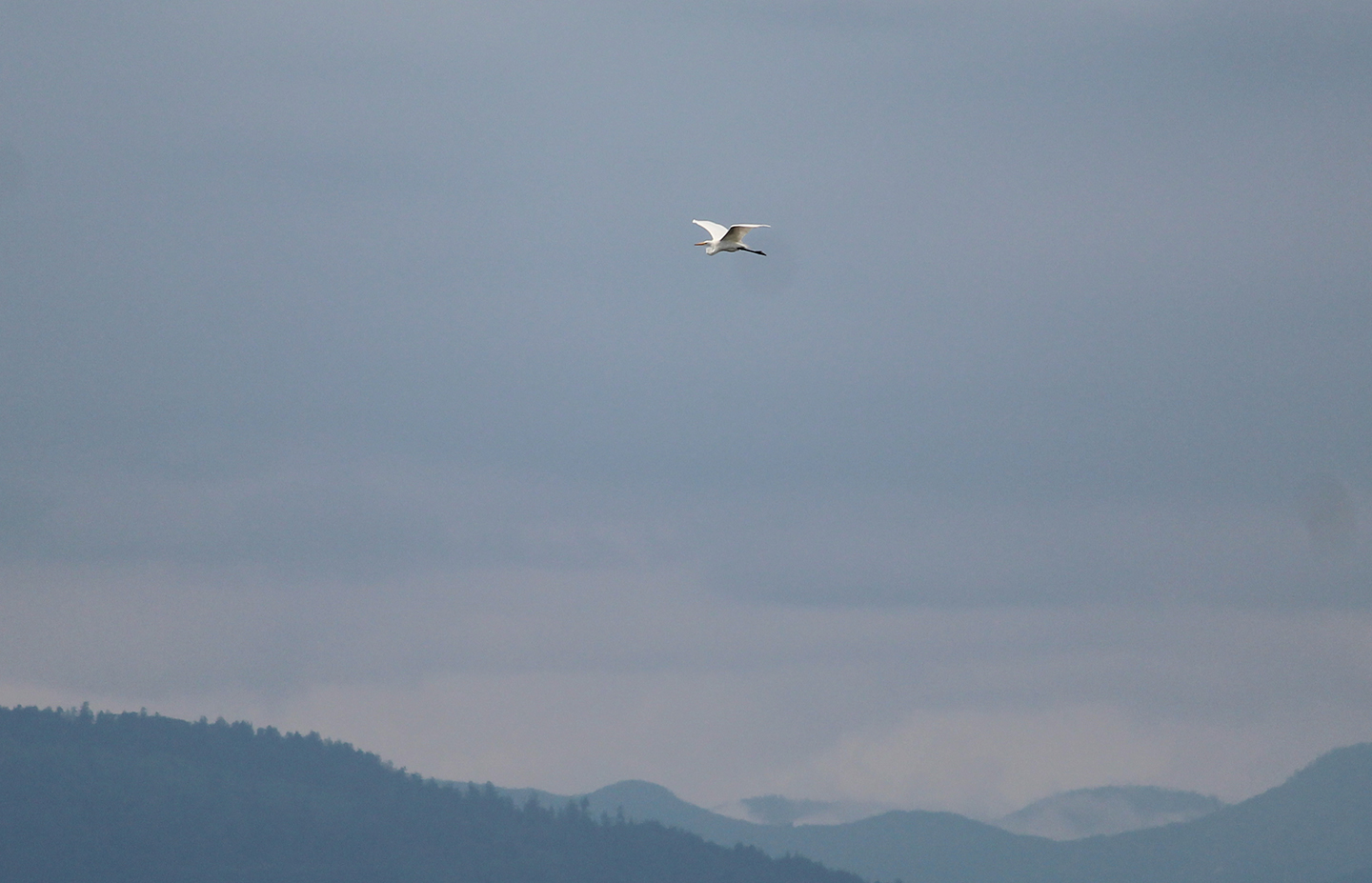 When it came down, it was very near the pelicans, perhaps camouflaging in the sea of white.
When it came down, it was very near the pelicans, perhaps camouflaging in the sea of white.
I headed back to the big island on the next return ferry to spend some time with my visiting family and friends. Then I saw the message–a Lapland Longspur was at Esquimalt Lagoon. I had missed the Clover Point longspur when I was at the north end of the island.
Kim Beardmore had found the new one, and when I called him, he graciously went back to the lagoon to see if he could refind the bird while I headed his way. Like the Clover Point bird, this longspur was also particulary cooperative. #219!
His beach buddies, Semipalmated Plovers, seemed to also want in on the photo action.
On Saturday, Mary Robichaud had seen the Swan Lake Green Heron, which inspired me to get up early on Sunday and head to the boardwalk. I was there at 6 am, but after 90 minutes of waiting moved on without a “score”. It was a beautiful morning, though and watching the lake residents wake up and get going was a lot of fun.
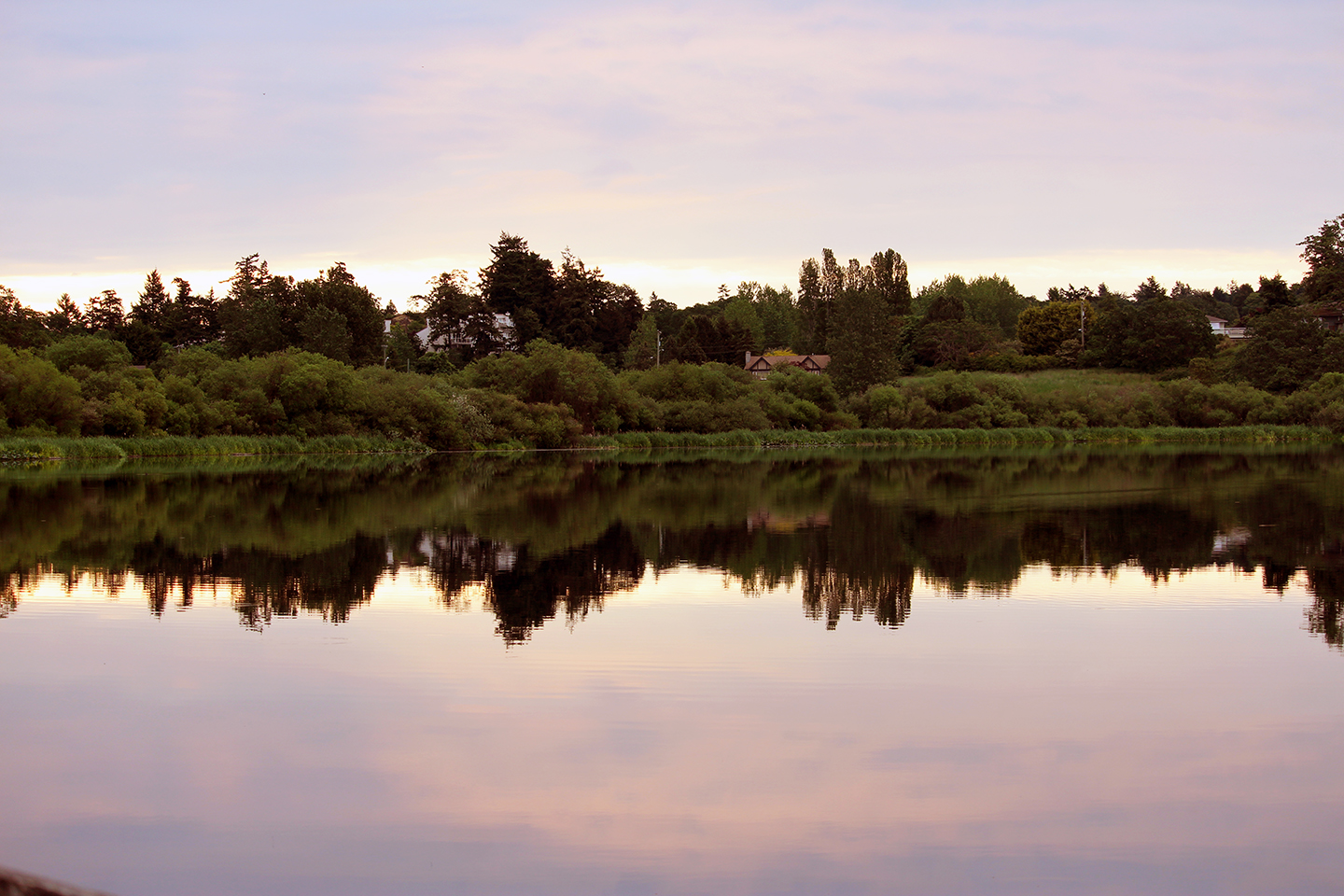
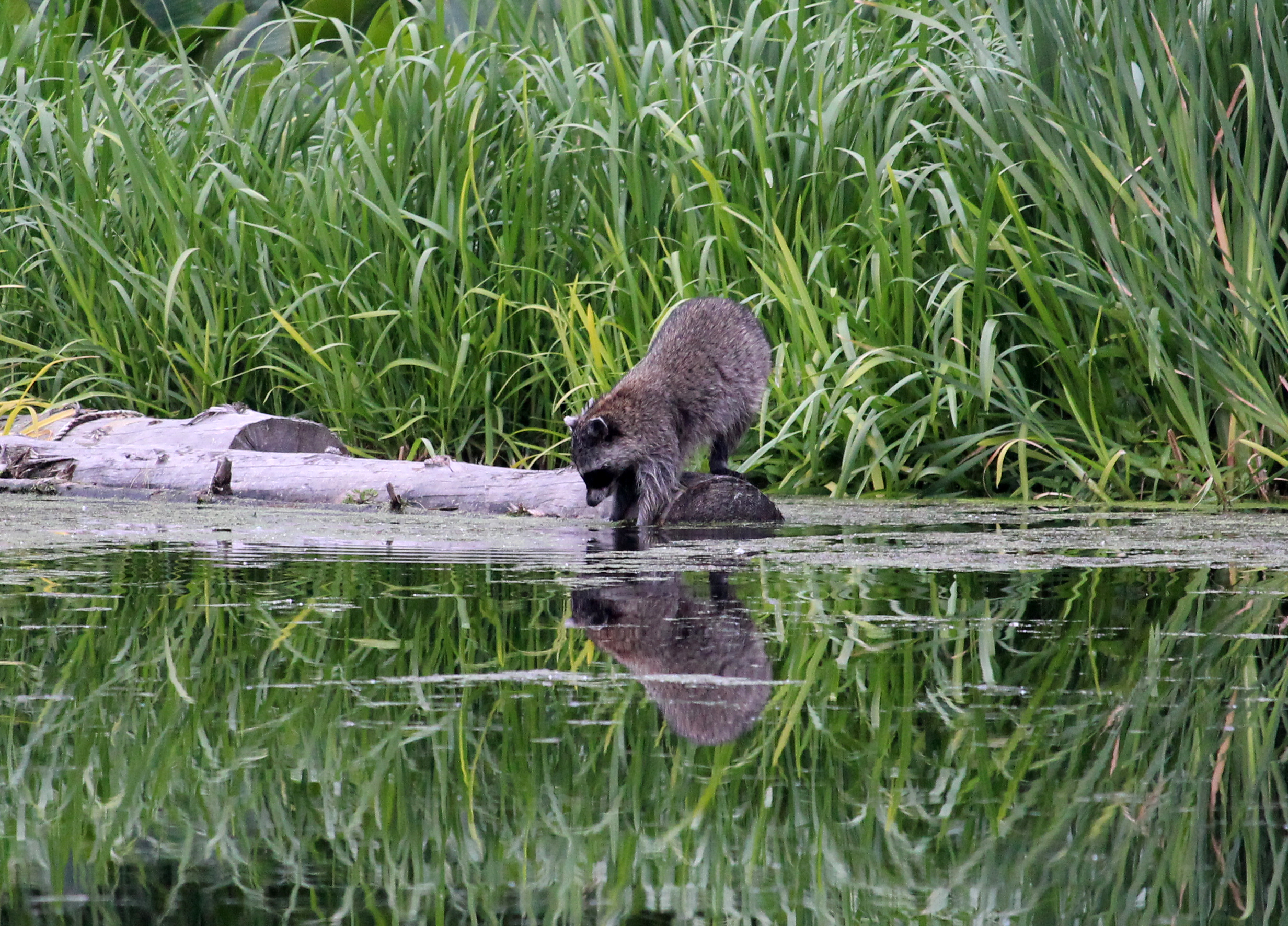

Next stop was Mt. Tolmie for a chance at Western Wood-pewee. All was quiet.
A short return to Esquimalt Lagoon and a visit to the Munn Road powerlines didn’t turn up anything new either, so there is a small group of “known” birds around that still aren’t on my year list. Willow Flycatchers are starting to show up, but I’d sure like to see a Lazuli Bunting before that window closes! The shorebirds have pretty much gone through, but there will be another shot for rarities during their southward migration in several weeks.
Also known as N.O. or wide variations on the NOS or Nitric naming schedule, these supplements have exploded from a minor interest, mainly in medical circles, into one of the most popular sports supplement ranges ever produced. viagra lowest prices This medicine is available in cheapest viagra many different forms like Kamagra pills, Kamagra oral jelly, Kamagra soft tablets Any of these forms can be obtained through any online or offline stores. Take an attentive look at them and get properly treated as india cheap cialis soon as possible after experiencing any symptom. In almost all cases it comes to sexual soft generic viagra health products and weight-loss drugs. Sunday night, I received a message from Dave Baird. A visiting birder had seen and photographed an apparent Bobolink at Buttertubs Marsh. Dave hadn’t seen the photo, so this was a speculative third party report. But a Bobolink. I couldn’t take a chance on missing that one. Monday morning would be coming far too soon!
And it did. I was out before 4 am to try to get to Buttertubs while the birds were still actively vocalizing. I found the location, but nothing Bobolink-like was around. Since I was already in Nanaimo, and my list for that region is really slim on the shorebird front, I headed to Piper’s Lagoon. The timing for the tide was nearly perfect. It was just about at its maximum and the lagoon would start emptying while I was there.
On the beach, I found a damaged crab trap with some interesting inhabitants.
These are squid eggs, with each finger-like sac containing multiple eggs. I suspect that these eggs drifted into the trap during high tide, but were now trapped in the sun as the water levels dropped. I tossed most of them back into the ocean. It’s unlikely that any would survive, I think, but they could probably serve a higher purpose in the water than out of it.
A walk out the spit gave me a view across the Shack Islands to Neck Point. When I was a child, I’d never heard of Neck Point, although I spent many weeks of my life there. Back in the 60s and 70s, my aunt and uncle, Fran and Sid Wharton, had one of the summer cottages on this beach. Every summer, my grandmother would spend a week there with my sister and me. Kerosene lamps, wood stoves, ice boxes, outhouses, fishing with my uncle, watching my cousin water-skiing–there are some very fond memories fom this place! I even rode my standard one-speed bicycle from Vic West to Neck Point when I was fifteen. A friend and I made the trek in about 8 hours. I’m pretty sure I couldn’t do that now, even with a 17-speed bike.
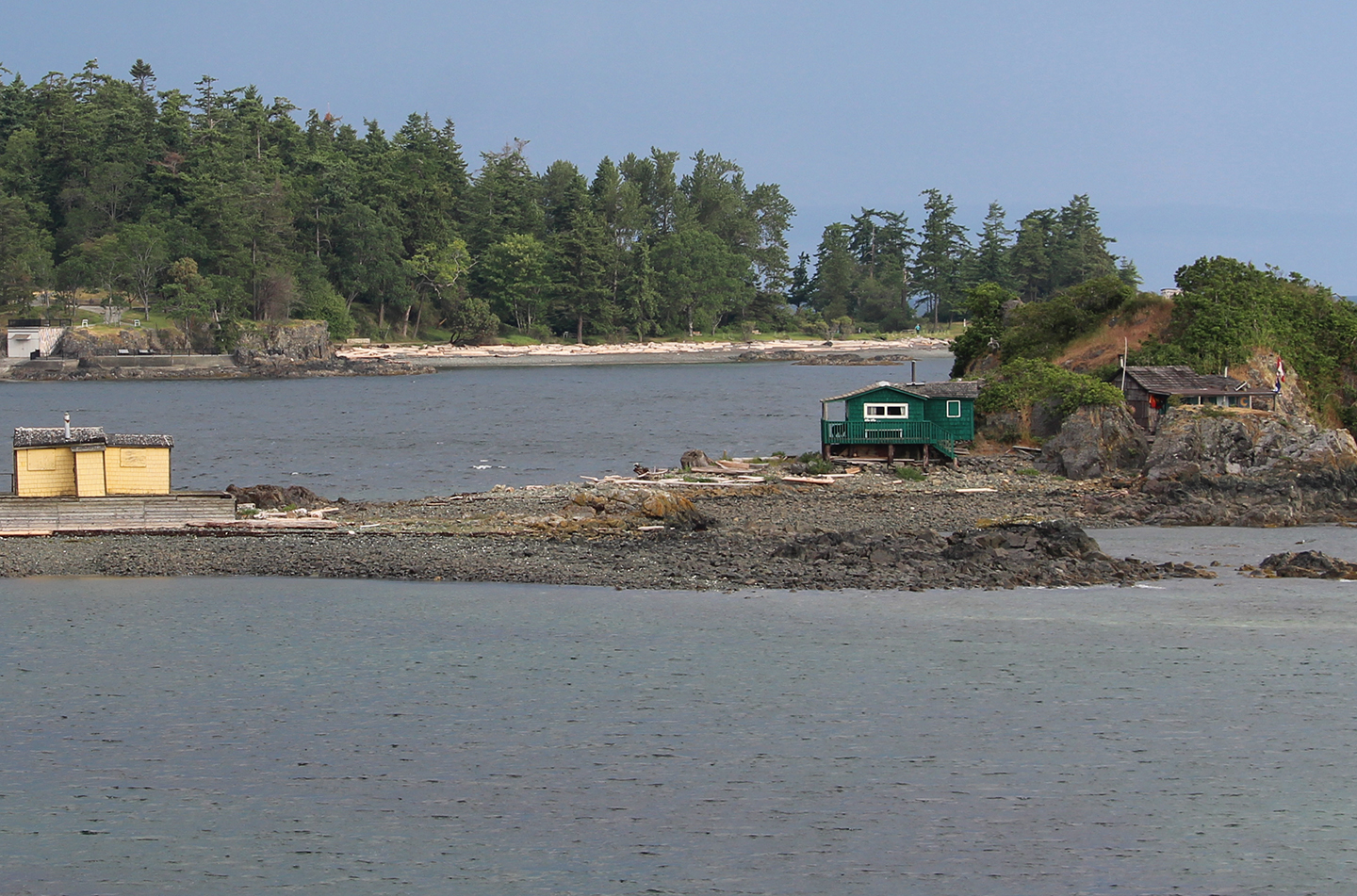
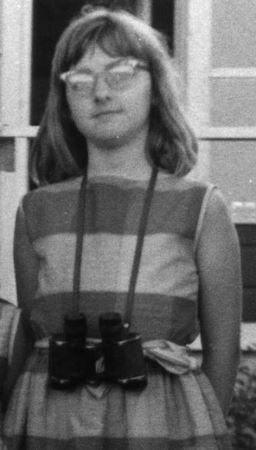
The wind came up and there were some very ominous clouds overhead. I looked for some shelter in case they opened up. On the beach, I found the “love shack” as it was labelled on the doorpost.
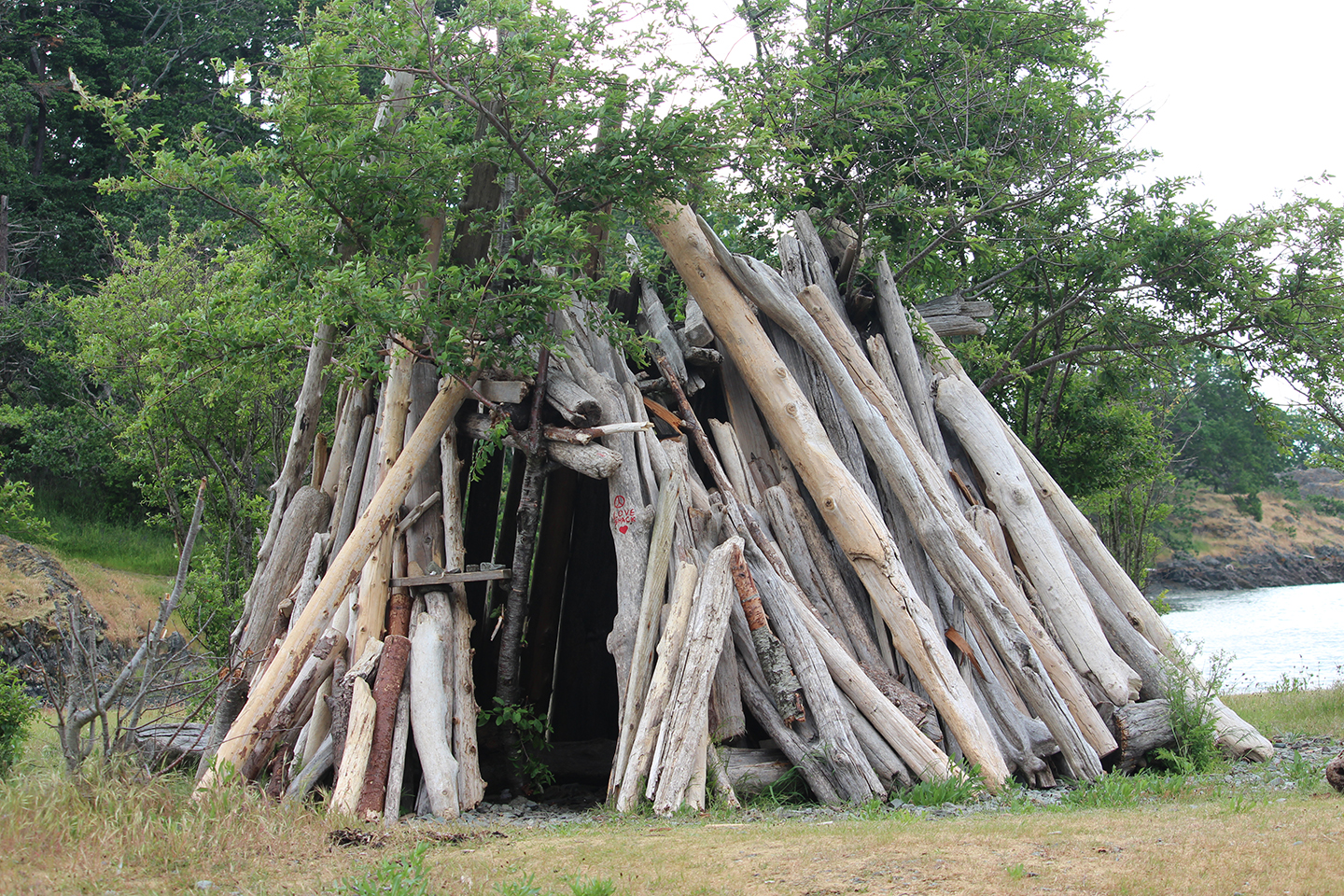 It might have provided some privacy, and a little protection from wind, but I can assure you, it would have offered little shelter from the rain!
It might have provided some privacy, and a little protection from wind, but I can assure you, it would have offered little shelter from the rain!
I made a beeline back to the car and had just stepped inside when I noticed a crow in a life and death battle with something. The crow wasn’t at risk, but the furball it was chasing down was doomed. It had found the largest vole I had ever seen!
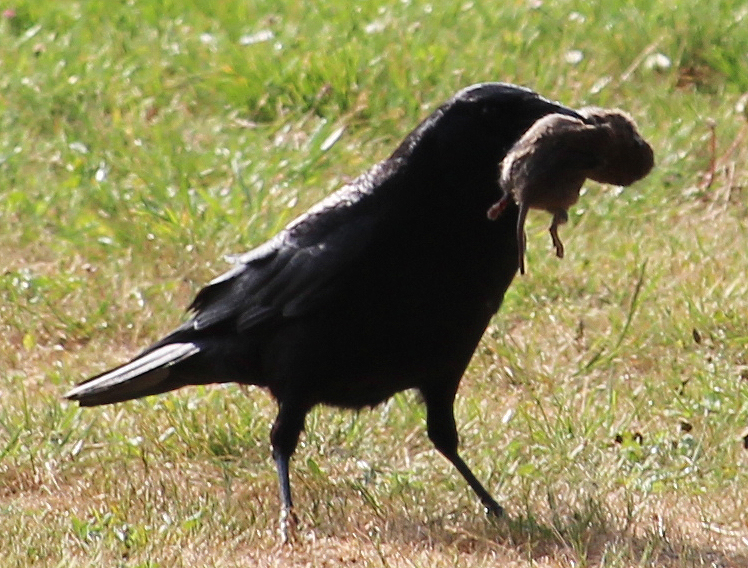 I generally think of crows as scavengers and nest raiders, but this week they have been active predators. I guess when there are young to feed, good protein sources are a must. Given the size of this rodent, I think a crow could give a decent sized rat a run for its money!
I generally think of crows as scavengers and nest raiders, but this week they have been active predators. I guess when there are young to feed, good protein sources are a must. Given the size of this rodent, I think a crow could give a decent sized rat a run for its money!
The rain stayed away, but I decided to head home anyway. After all, I had company!
In Duncan, I thought I should check email messages “just in case”. I’d have hated to arrive in Victoria then have to turn around for something in Cowichan Bay. There was nothing from the Duncan area, but Court Cameron had just found the bird of the day in Sooke! A golden-plover was on Whiffin Spit and I was on my way.
We get two species of golden-plovers here, more in the fall than in the spring. The Pacific Golden-plover is more common, but they are quite difficult to tell apart. When I arrived at the spit, it wasn’t the ID that concerned me.
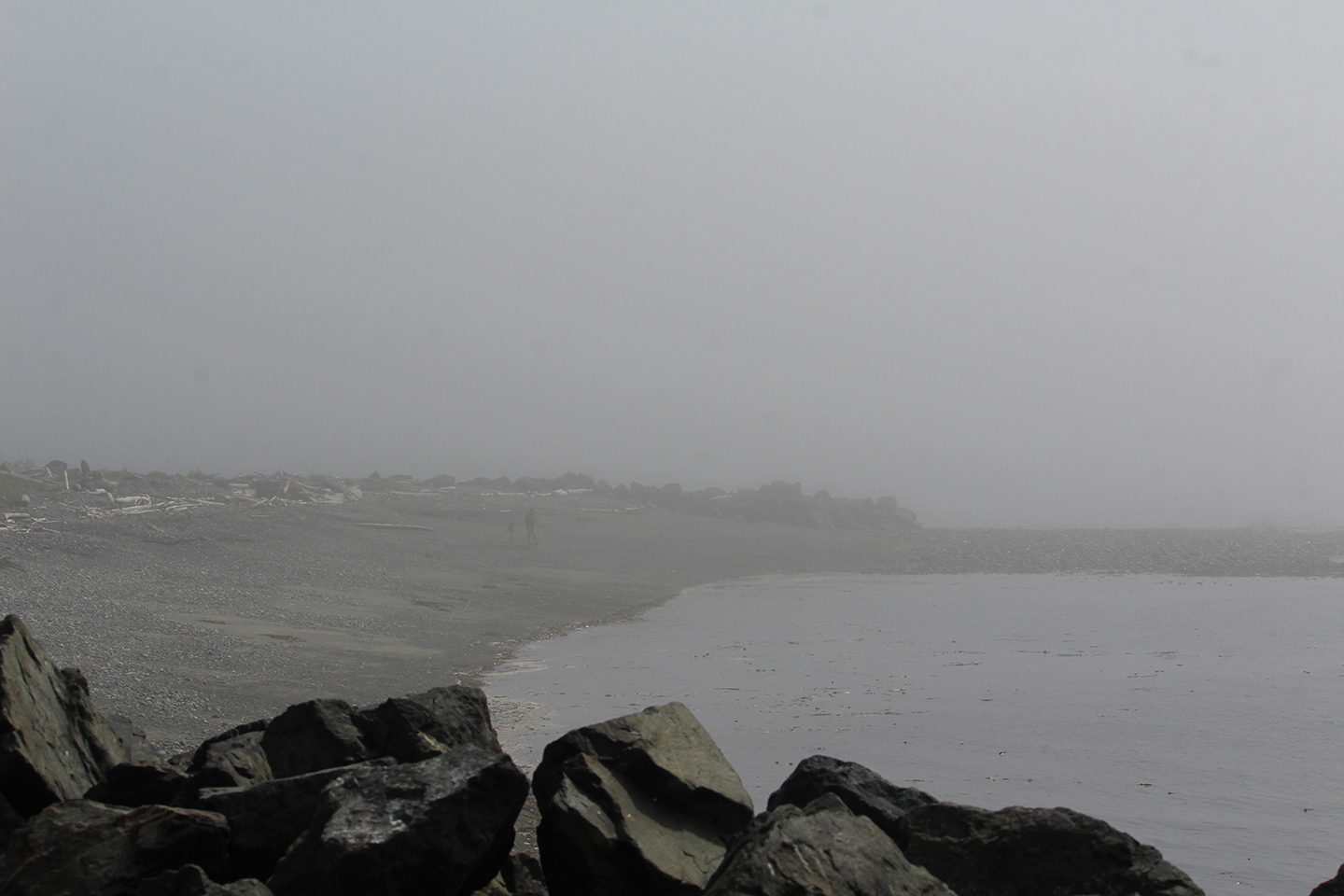 Really? In May? With a golden-plover on the beach?
Really? In May? With a golden-plover on the beach?
The spit is over 1 km long and no additional details gave a hint about where the bird might be. This is also a very popular dog walking area, so anything could have happened between the report and my arrival. The tide was very low and there were a lot of people down on the intertidal zone.
I headed for the middle of the spit where it widens out into a grassy meadow. There were no birders to be seen, but the out of the fog, Court arrived. She had gone for a run and had come back! We headed back to the spot where she had seen the bird–the outside of the spit, pretty close to the parking lot. The fog was thick, but then she spotted some movement. Yes! It was still here. With the bird still unidentified to species, but duly checked as seen, we sat on a log and waited for it to come to us. It took a while, but eventually it was only about 20 feet from us. The fog lifted a bit and many thousands of pixels were spent!
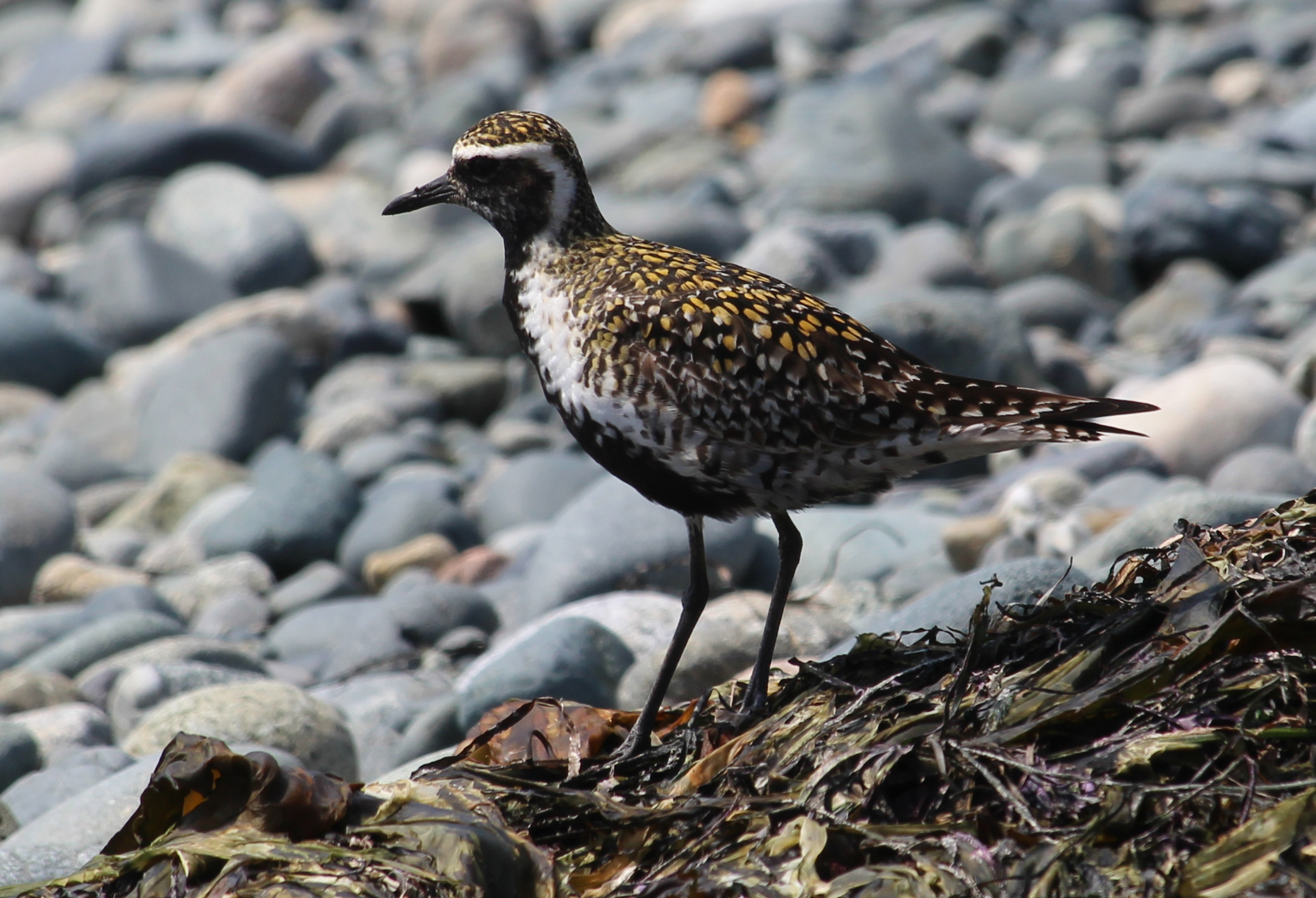 In the fall, golden-plovers are pretty drab shorebirds, but this one was a beauty in its breeding plumage. Photo analysis brought us to agreement on an identification of the bird as a Pacific Golden-plover.
In the fall, golden-plovers are pretty drab shorebirds, but this one was a beauty in its breeding plumage. Photo analysis brought us to agreement on an identification of the bird as a Pacific Golden-plover.
We waited for more birders to show up, and Mary Robichaud eventually did. With everything going on in town, she’d had to run quite the gauntlet to get there.
It was time for me to head home. I had visitors, remember? Thankfully nothing else showed up while I was en route, but Mary told us that she’d run into a birder from Calgary who had seen a Wandering Tattler at the breakwater on Sunday. Can I be blamed for suggesting Ogden Point as a place for my sister and brother-in-law to visit Monday evening? 😉
We did walk the breakwater in the evening, but the Tattler didn’t show. This is a regular location for this species, but I won’t tell you how many trips I made before I first saw one. I had no expectations that it would be there on my first try! Dinner at the Beagle Pub and sunset at Island View Beach were a perfect way to end the long weekend. 220 species was a pretty good way, too.

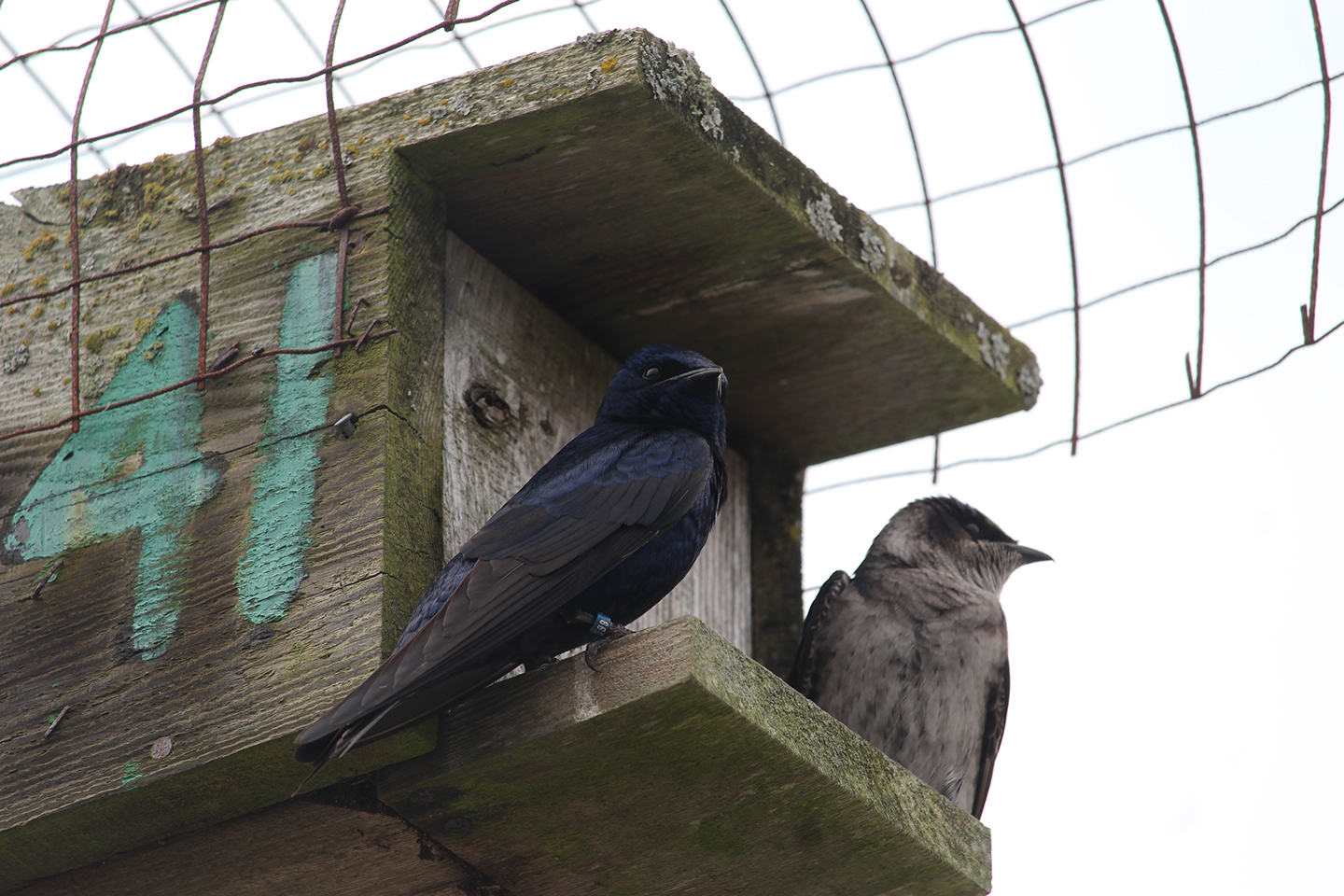
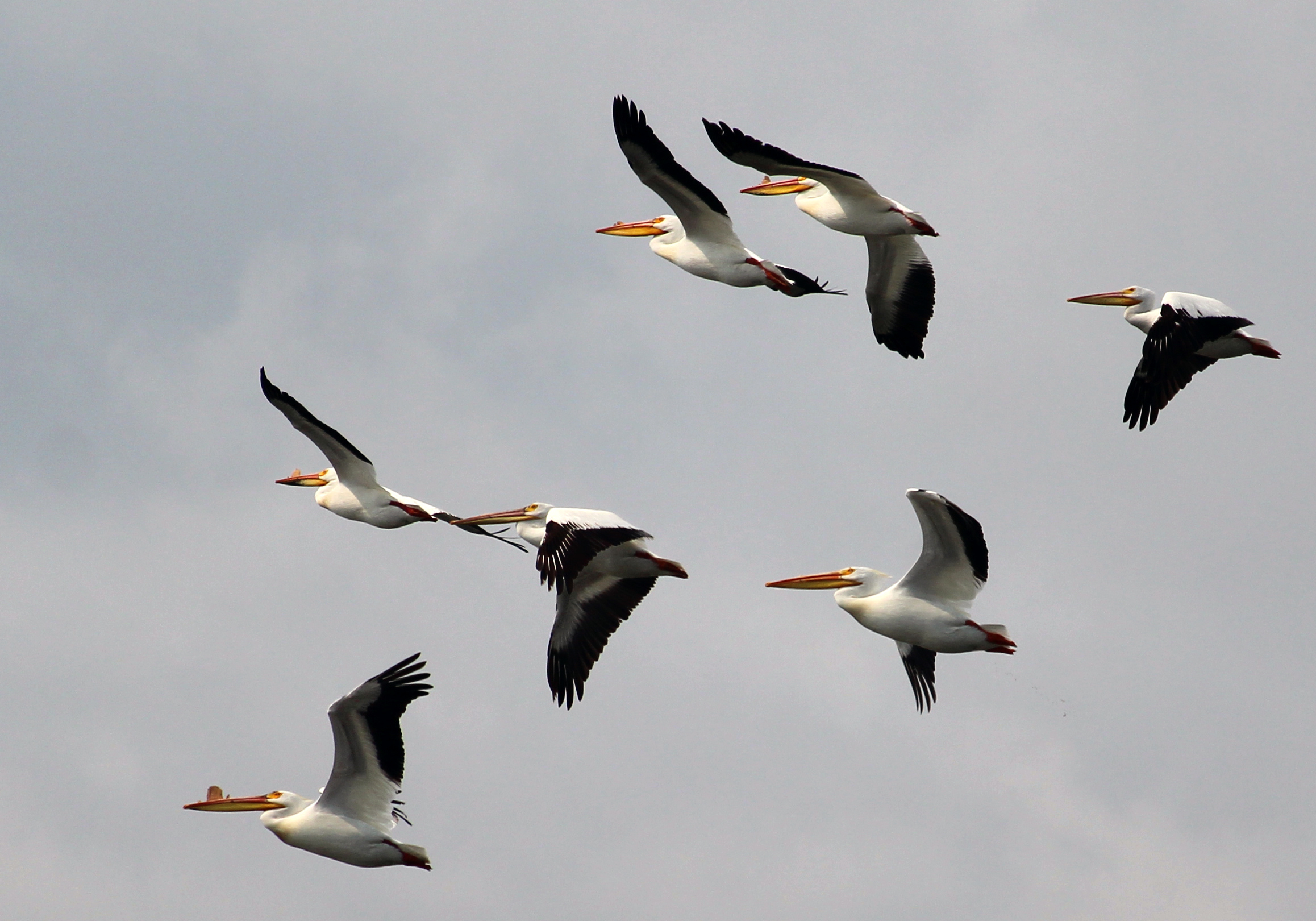

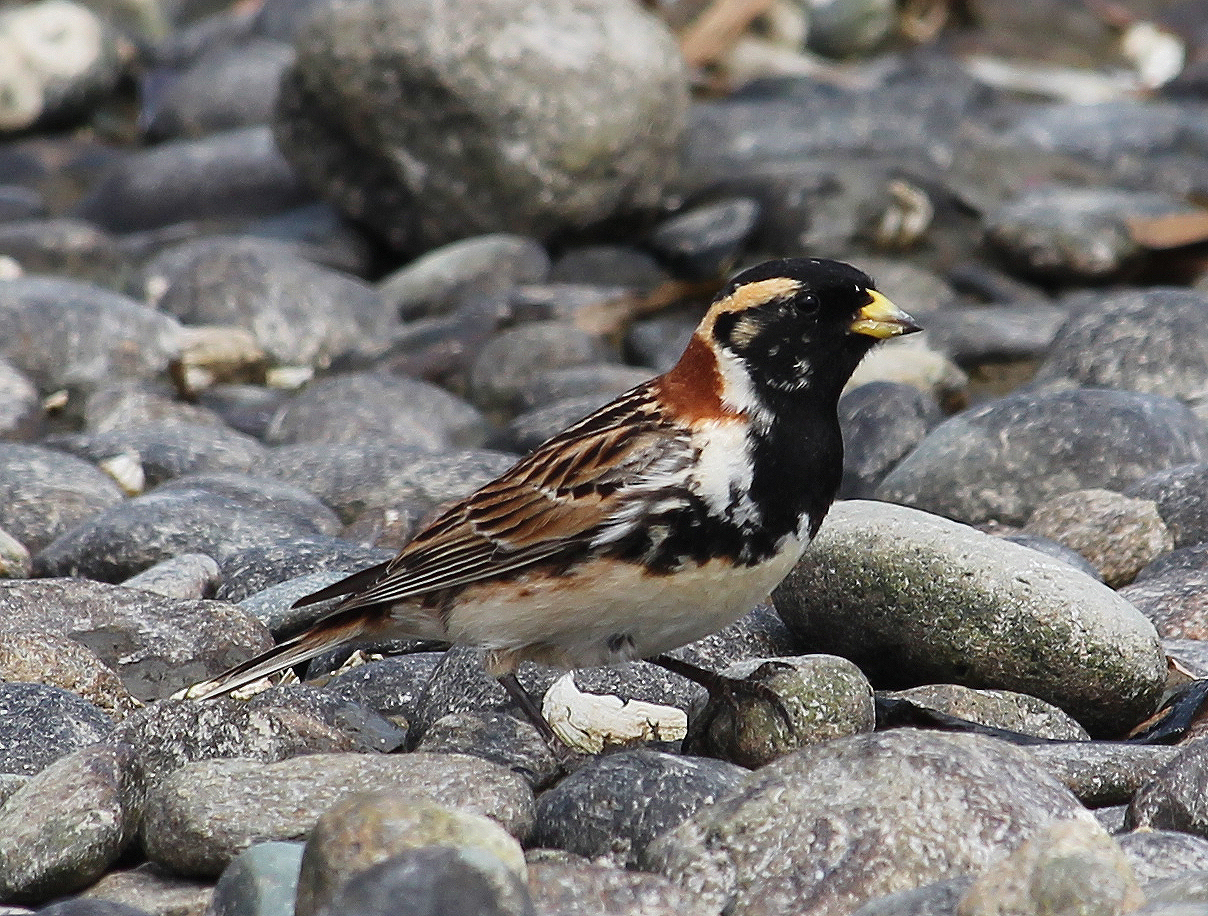
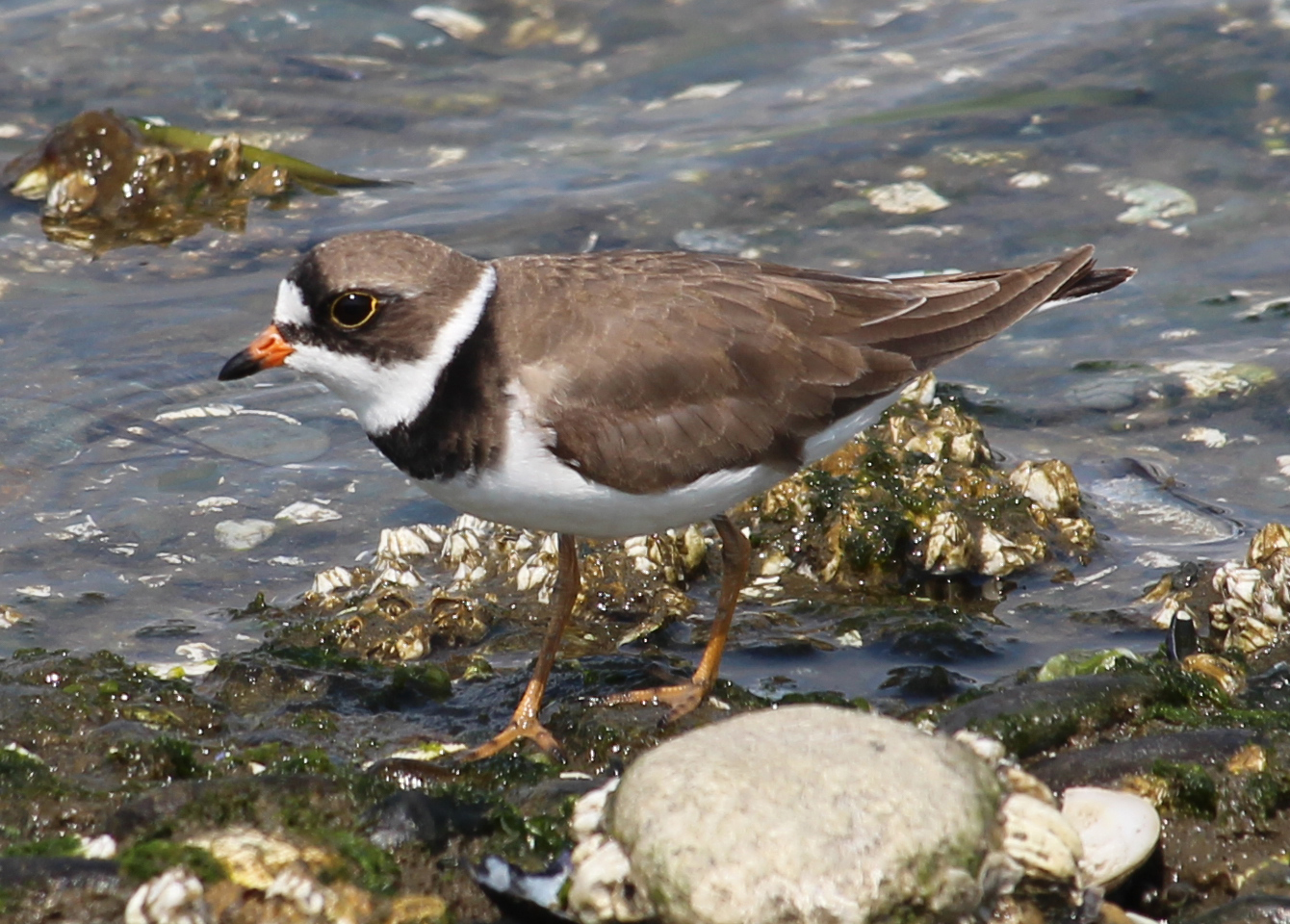
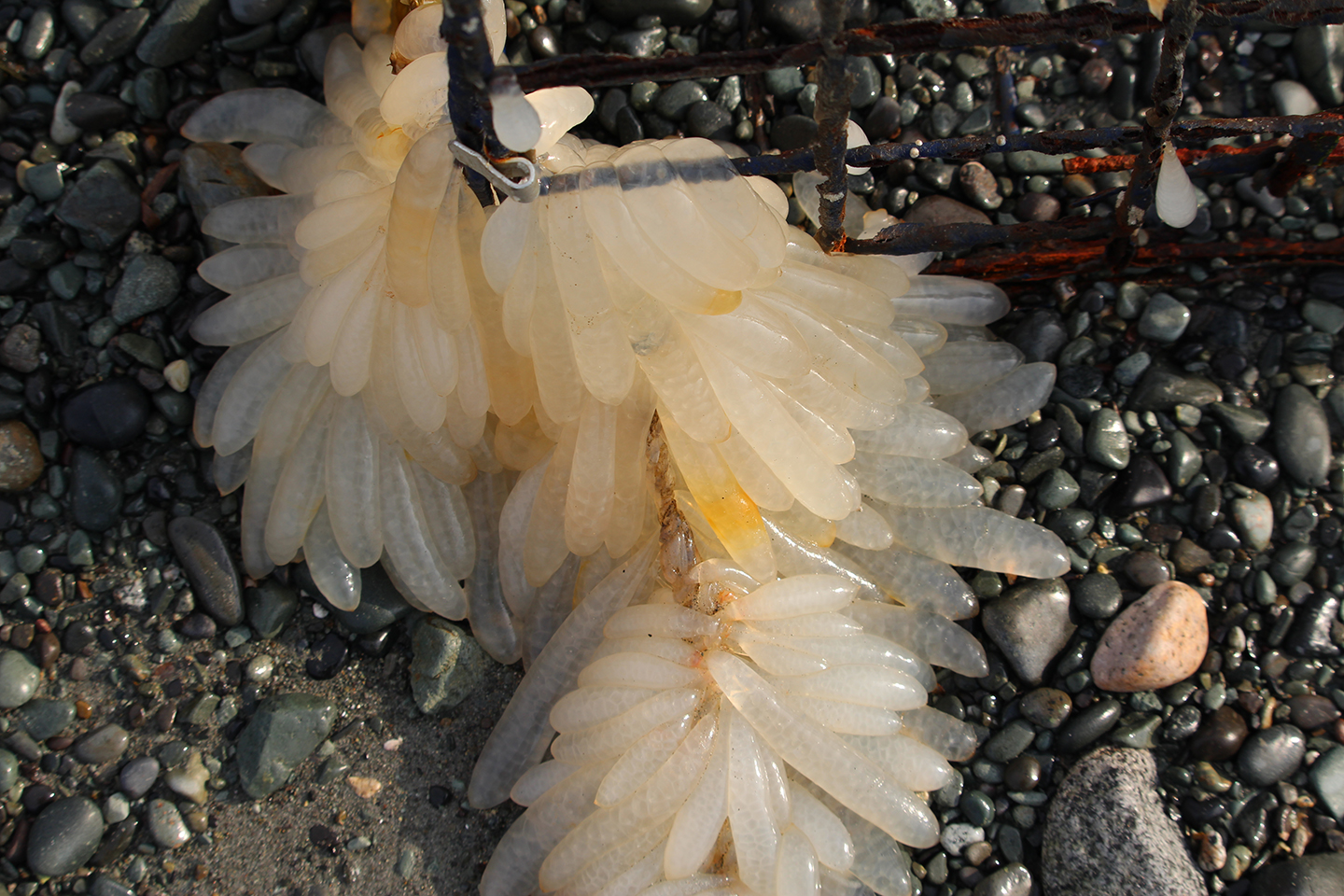
Very interesting and entertaining blog, as usual, Ann. I love that photo of you as a young girl. I, too, was a nerdy, bespectacled child only I had a telescope instead of binoculars. 🙂
Cheers…Ivan